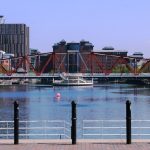During our Behind-the-Scenes series, we’ve explained the processes that underpin the bespoke waste management services we provide for our construction, commercial, and domestic clients.
We process a wide variety of waste from different sources at our main site, more than 15,000 tonnes of it every month. What comes in must go out and for a business like ours, diverting more than 99% of the waste we process from landfill, the final stretch can be a complex story.
This final instalment of Behind-the-Scenes will delve into that last stage to explain how and where your waste goes after it leaves our state-of-the-art facility.
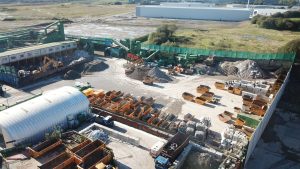
Our guarantee (that less than 1% of the waste we process ends up in landfill) is made possible by the close relationships we’ve built with our secondary markets. Other than 6F2, an inert, unbound aggregate used as a sub-strata in construction, nothing leaves our site as a finished product. Our secondary markets are the businesses and organisations that bring new life to the waste products we’ve meticulously sorted, processed, and prepared for recycling.
The majority of the waste we process goes to recycling. For soft and rigid plastics, as well as cardboard, part of that final process involves baling. Baling is a fairly simple and intuitive process that uses a machine designed to shape and compact specific waste materials.
70,000 plastic bags, for instance, will be compressed into a bale weighing roughly 1.3 tonnes. These tight bales, each one only slightly larger than one of our 2yd3 skips, make transporting recyclables commercially viable and as carbon friendly as possible.
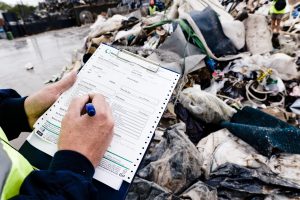
Recyclers value our dense, high-quality bales. By carefully separating waste materials at our sector-leading facility, we help recyclers produce the superb reusable materials they’re known for.
In this way, our secondary markets help create a more competitive environment for manufacturers and reduce dependency on raw materials and virgin plastics. Recycled plastic bags, for instance, usually find their way into more plastic bags, adding circularity to the UK economy.
We also ensure that those baled recyclables only leave our facility when we’ve processed enough to send a full load, minimising our recyclers’ transport costs and reducing the associated carbon footprint. It’s the same logic that goes into each of our tailored waste collection solutions.
Other recyclables, such as wood and scrap metal, are sorted and graded to leave our site in a similar, streamlined process. With more than 35 years of waste management experience, we understand the importance of efficiency in achieving sustainability targets.
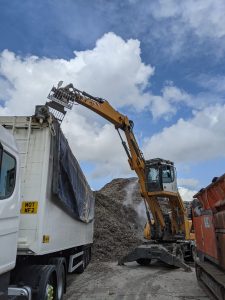
What can’t be recycled mainly goes on to generate energy at specialist facilities. Landfill is only ever a last resort, and a lot of unrecyclable waste, such as insulation, waxed paper, and textiles, can be shredded to produce RDF (Refuse-Derived Fuel).
Efficiency is a top priority, so the trucks we load with RDF have a capacity of 130yd3, or approximately 100m3. Once we have a full truck-load, it’s then sent off as refined RDF to an energy from waste facility.
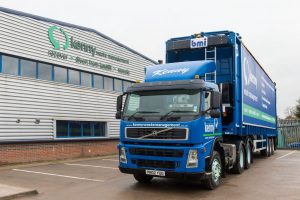
It’s challenging work, but our facility is the catalyst for our people’s expertise. Finding and delivering on the best options for your waste is part of the exceptional service we’re committed to providing all our clients.
Our core values are “recover, divert from landfill, recycle,” and we’re proud to see that vision reflected in our outcomes.
We’ve enjoyed the opportunity to demonstrate our processes that this Behind-the-Scenes series has given us. We value transparency, especially between customers and suppliers, which is why we always welcome queries from customers about what happens to their waste.
We’ll be back with a new series soon.


